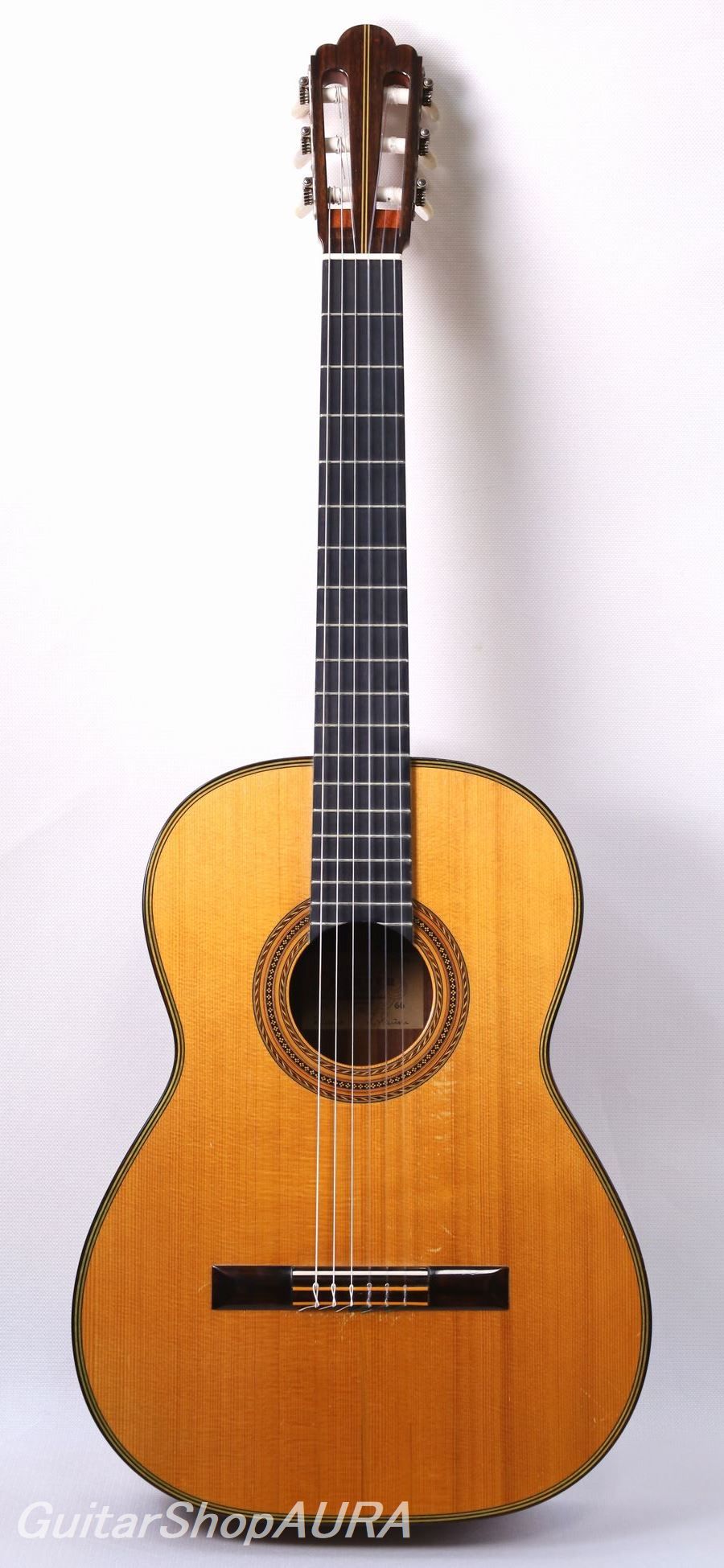
| Instrument | Hermann Hauser II |
| Category | Imported Classical Guitars 〔Vintage〕 |
| Number/Model | No.786 |
| Scale length | 645mm |
| Country | Germany |
| Year | 1966Year |
| Top | Solid Spruce |
| Side&Back | Solid South American Rosewood |
| Condition※ | 7 |
| List price | INQUIRE |
| Price (tax included) | Please Inquire |
| option | with Hardcase |
Click to enlarge the photos below
Neck:Mahogany
Fingerboard:Ebony
Finish:Laquer
Tuning Machine:REISCHEL
String height:1string 2.8mm/6string 4.0mm
[Profile]
Hauser Guitars is without a doubt the best German guitar brand of the 20th century, and is still a long-established brand with four generations carrying on the tradition and continuing to build guitars from the first generation for over 100 years.
Hermann Hauser I (1884-1952) improved his own guitars based on the Antonio Torres owned by Miguel Llobet and the Manuel Ramirez owned by Andres Segovia. It is well known that it became the 'ultimate' guitar, which later became known as the 'Segovia model.' It was the greatest event in the history of guitar making since Torres's reform of the guitar, and had a profound influence on both guitar playing and making in the years that followed.
Hauser II, the son of the first, began working in his father's workshop in 1930 after four years of learning at a violin-making school in Mittenwald, known as one of the best string instrument-making cities in Germany.
They worked almost exclusively together to make guitars, which were shipped under the label Hauser I.
When Hauser I died in 1952, Hauser II officially took over the brand and produced the first label (No. 500) with his own label. Since then, he was extremely active and shipped more than 500 guitars until his retirement in 1983.
Like his father, Hauser II matured his own production philosophy through his interactions with master players (Segovia, Julian Bream,Pepe Romero, etc.), and by clarifying his own Germanic acoustic tastes, he produced many masterpieces with different characteristics from those of Hauser I.
He also clarified his own Germanic acoustic orientation, which was probably a quality of his own.
The guitars of 1958 and 1960, which Bream loved to use, are famous for their sound, which is even more penetrating than that of the first generation, with a classical elegance in the perfect balance of every single note, making them unique guitars that combine stoicism and lyricism.
From the 1970s onward, he began to produce many Pepe Romero models, which should be noted for their originality, as well as guitars with previously unused specifications, but the Segovia model, which he inherited from the first generation, stands out for its high level of perfection. Even as the modern guitar trend began to set new standards in the 1980s,Houser guitars never diminished in value as the ultimate model, and are still one of the highest priced brands on the market today.
In 1974, his son, Hauser III (1958- ), joined the workshop and worked with him for about 10years.
The third generation also continues to produce models with an extremely high degree of perfection that live up to the brand's name, while adding his own tastes to the essence of the second generation.
[Description]
We are pleased to present Hermann Hauser II, 1966, No. 786. There is a 2 to 3 mm wide crack from the bridge to the bottom of the sound board, and another 5 to 6 cm wide crack on both sides of the sound board. Each of them has been properly repaired and einforced with patches from the inside. There are no cracks on the back and sides, but the original paint is uneven and cloudy.
The tuning machines are Landstorfer, which were installed on the instrument when it was first made.